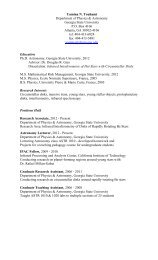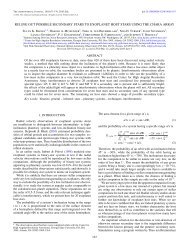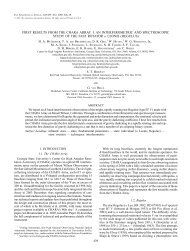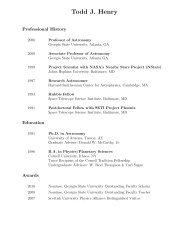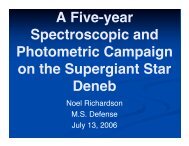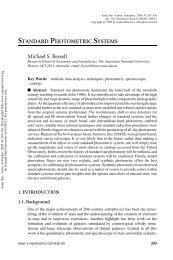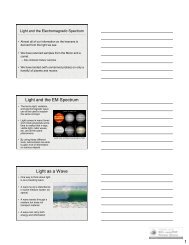Optical Coatings for CHARA Reflective Optics - GSU Astronomy ...
Optical Coatings for CHARA Reflective Optics - GSU Astronomy ...
Optical Coatings for CHARA Reflective Optics - GSU Astronomy ...
Create successful ePaper yourself
Turn your PDF publications into a flip-book with our unique Google optimized e-Paper software.
<strong>Reflective</strong> <strong>Optics</strong>characteristics. It should be possible to calibrate this region from the observed count-rates inthe tilt detectors, but this has not been done at this writing.5. GOLD COATINGSGold is the best red-infrared reflector. It is often not acceptable <strong>for</strong> astronomy because thereflectivity at 0.5 microns is only 60% and falling fast toward the blue. If the tilt trackingdetectors are changed over to red-sensitive, <strong>CHARA</strong> could consider gold, since the onlycurrent "visible" requirement is <strong>for</strong> the alignment laser, and gold reflectivity at the laserwavelength is greater than the aluminum reflectivity. Gold does not adhere well, but can beapplied to glass using a metal bonding layer. Bare gold has the highest broadband reflectivity,but is scratched easily. It might be appropriate <strong>for</strong> use in the laboratory and vacuum system,but not in the telescopes, which must be cleaned regularly. Protected gold could be used in thetelescopes.6. SILVER COATINGSFresh, bare silver is a very efficient reflector in the red and infrared.reflectivity is shown in Figure 3.The theoreticalFigure 3. Fresh bare silver (upper curve). Below, ideal protected silver coatingEM.2 from Newport, according to vendor specifications. The curves are <strong>for</strong> onaxis,and <strong>for</strong> off-axis in two polarizations.5



